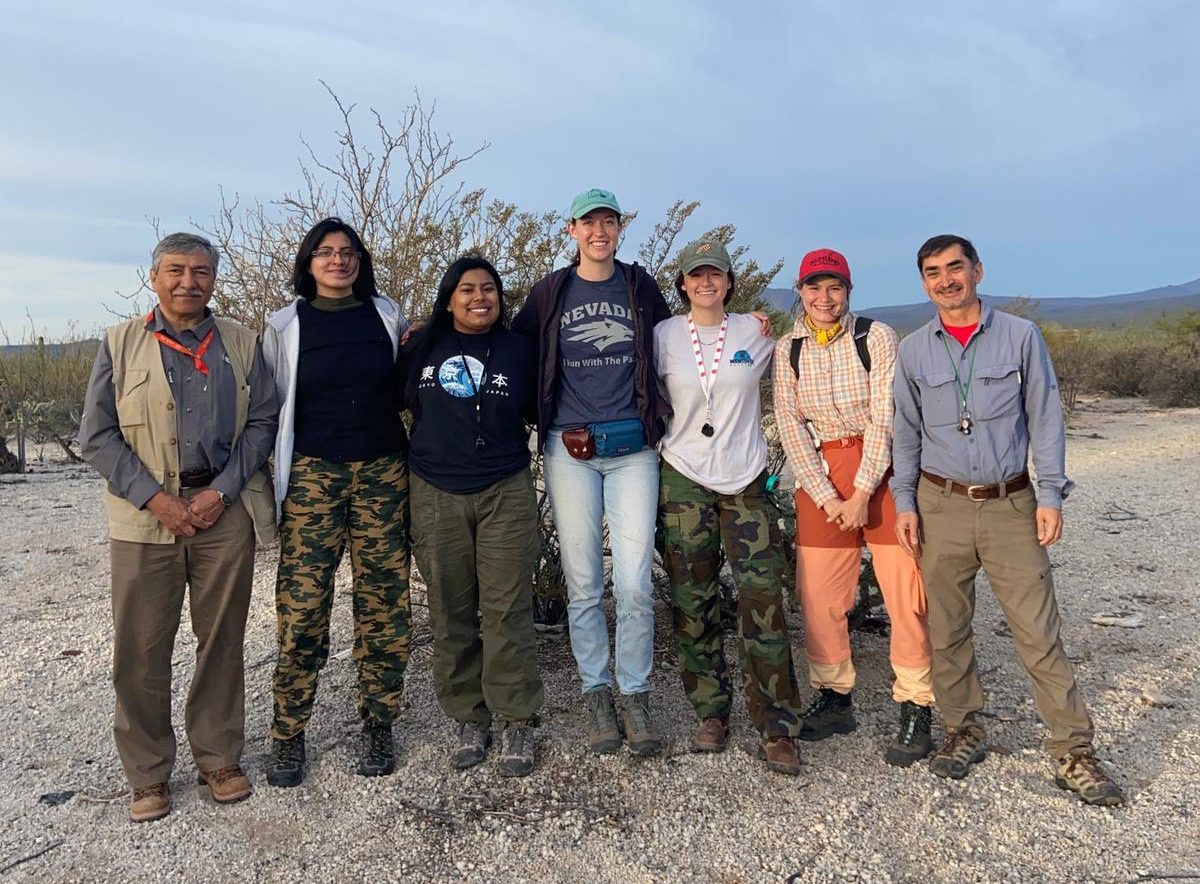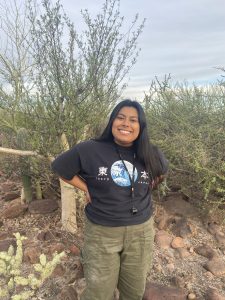UA Little Rock Geology Student Selected for U.S.-Mexican Research Program

A University of Arkansas at Little Rock student is participating in a unique U.S.-Mexican collaborative research opportunity that combines digital field mapping techniques with state-of-the-art laboratory analytical work on the tectonic evolution of the Santa Rosalía basin area in the Gulf of California rift.
Mariela Saavedra Duran, a double major in geology and Spanish from Alexander, Arkansas, was chosen for the Baja Basin program, which is funded by a grant from the National Science Foundation as an International Research Experiences for Students program.
During the first part of the trip, Duran spent three weeks in January conducting field research in Baja California, Mexico. Student researchers study rocks, sediments, and landforms in basins of the Santa Rosalía area mentored by faculty from University of Missouri-Kansas City, University of California-Davis, University of Oregon, Nevada Bureau of Mines and Geology, Indiana Geological & Water Survey, and Mexican collaborators from Universidad Autónoma de Baja California Sur and Universidad de Guanajuato.
Duran joined a group studying tectonic geomorphology, while other research teams studied volcanology, mining, mineralogy, and basin analysis. Duran used GIS mapping software to map out different terraces across the region.
The Santa Rosalía basin area was selected because it is one of the few places in the world where volcanic and marine sedimentary sequences and large uplifted Quaternary terraces can be used to understand the processes involved in the progressive stages of continental breakup. Because of the rapid tectonic motion in the Gulf of California rift, the Santa Rosalía basin area is a site where the stratigraphic history and processes of deformation can be studied in detail with exceptional exposures and accessible outcrops.
“I’ve only had two geology courses before this research experience, so I had a lot of learning along the way,” Duran said. “I am grateful that I had this field research experience, because now I am able to use my knowledge from that research trip and connect it to what I am learning in my classes today.”

During the second part of the project, Duran and her fellow student researchers will spend four weeks this summer at the University of Missouri-Kansas City. They will compile and draft field data, collect and analyze lab data, and prepare and present an abstract and poster on their research.
At UA Little Rock, Duran is also a member of the Louis Stokes Alliance for Minority Participation and Chancellor’s Leadership Corps as well as the Learning Assistants Program, where she worked in Dr. Laura Ruhl’s physical geology classes. She plans to graduate in 2023 and then pursue graduate school. Duran has been interested in geology ever since she was a child.
“Geology students all love to be outside and interact with nature,” Duran said. “It takes me back to when I was a child, and it’s really interesting and intriguing.”
Duran is grateful for her experience with the Baja Basins program for giving her the opportunity to work with people like her who are passionate about geology.
“Before this research, I felt a little lost because I didn’t see a lot of Latinos majoring in geology,” Duran said. “I enjoyed collaborating with my Latino mentors and a university student from Mexico. They supported me and helped me understand that other people like me work as geologists. It’s still one of my hopes to see more Latinos pursuing geology. I don’t want other people like me to feel alone in geology like I did. This research experience helped me realize that geology is my thing and it’s what I want to do with my life.”
